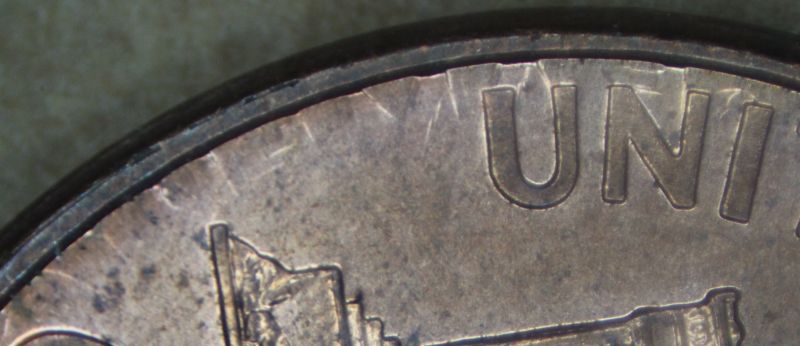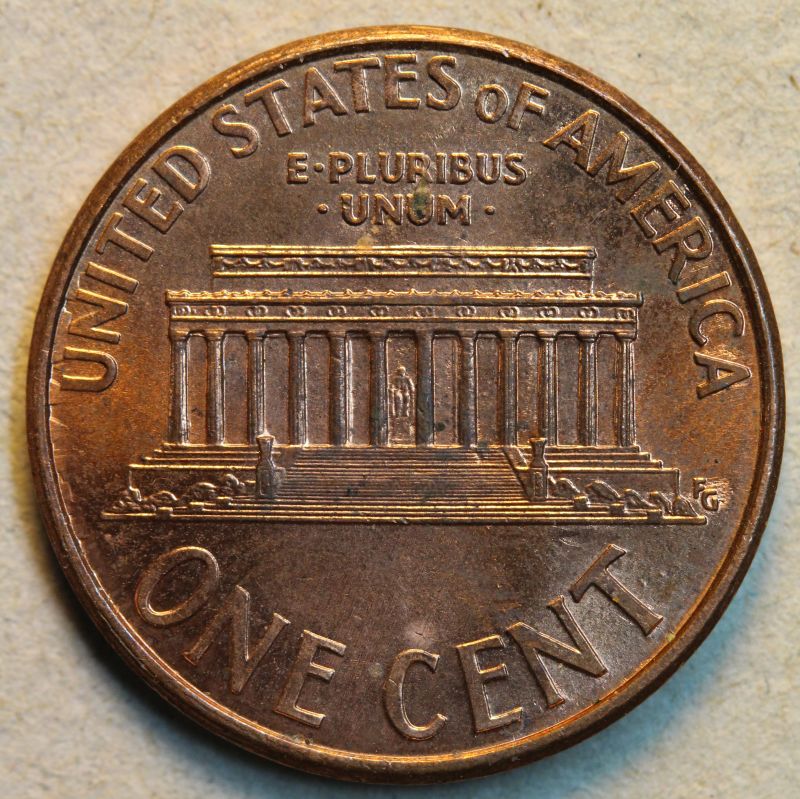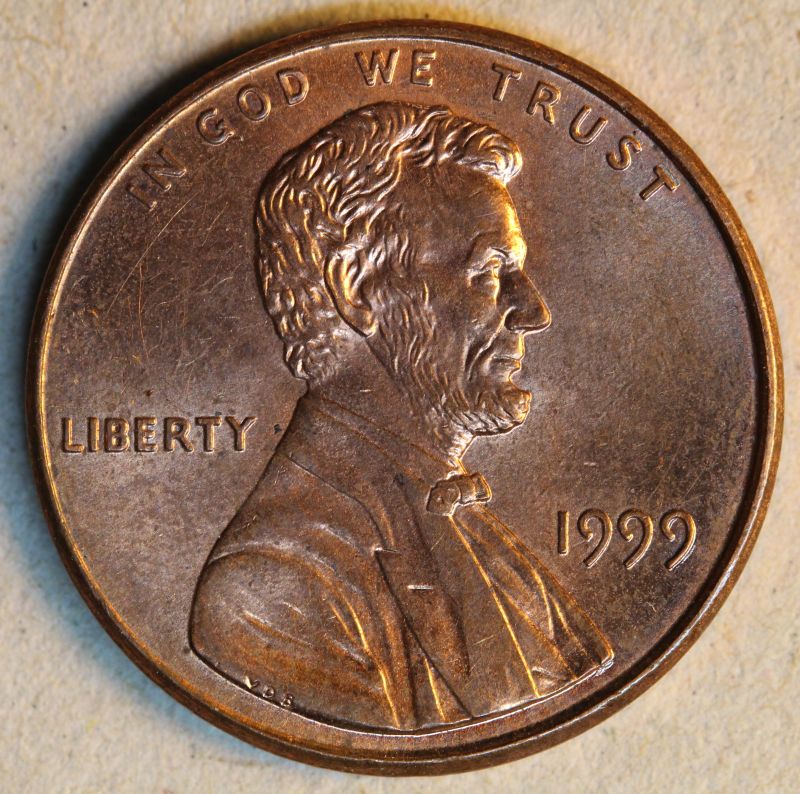MUDC-1c-1999-01
A clashed die error occurs when dies collide in the absence of a planchet. The strangest expression of such an error is the mule clash. This involves a collision between two dies that should never have been paired. Mule clashes were thought to be a 19th century phenomenon, however in 2018, Amy Antone discovered the first mule clash of the modern era in a pile of cents diverted from pocket change. It appears on the reverse face of a 1999 cent. At some point the reverse die that struck this cent clashed with another reverse cent die. The clash occurred at an angle (a tilted or vertically misaligned die clash). This left the letters “oF AMERIC” arranged just inside the design rim on the left side of the reverse. The dies also clashed twice, with slight movement between impacts, leaving all of the incuse letters doubled. The die that generated the clash marks was slightly misaligned toward the left, leaving the tops of the incuse letters cut off. Finally, the clash marks are rotated about 40 degrees counterclockwise from medal alignment. The significance of this positioning is unclear.
There’s no way to tell whether the two reverse dies were actually installed in a press when the clash occurred. This bizarre clash transpired during the 11-year period (1990-2000) that produced over 34 Lincoln cents with “radical MAD clashes”. All of these are tilted die clashes, and most feature a wildly misaligned die (presumably the obverse or hammer die).
Tom DeLorey suggests that this 1999 cent may actually show a floating die clash from a die fragment that bounced over from an adjacent striking chamber in a dual or quad press. While this can’t be ruled out, the preponderance of the evidence supports the mule clash theory.
Images and text are from Mike Diamond.



